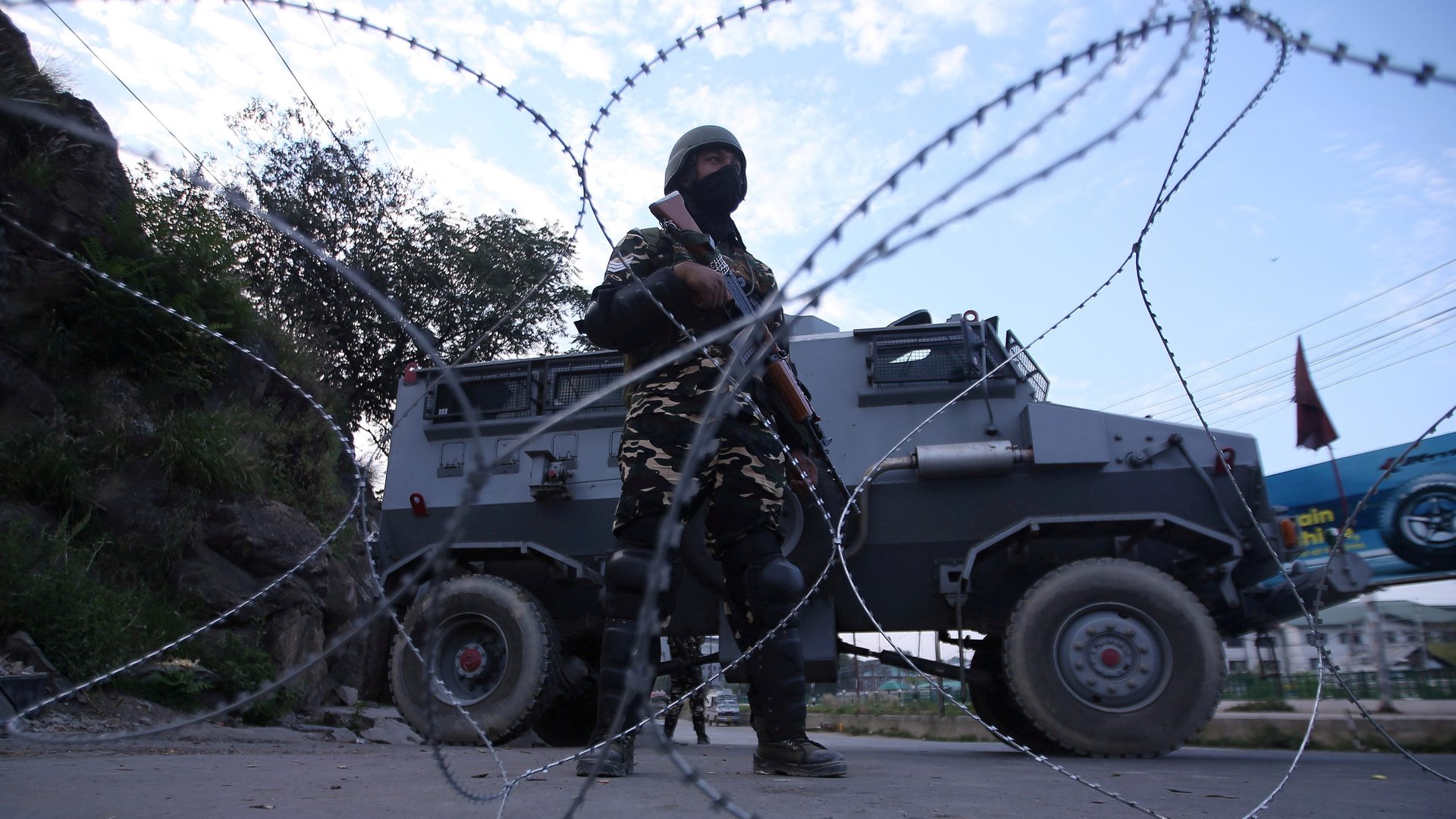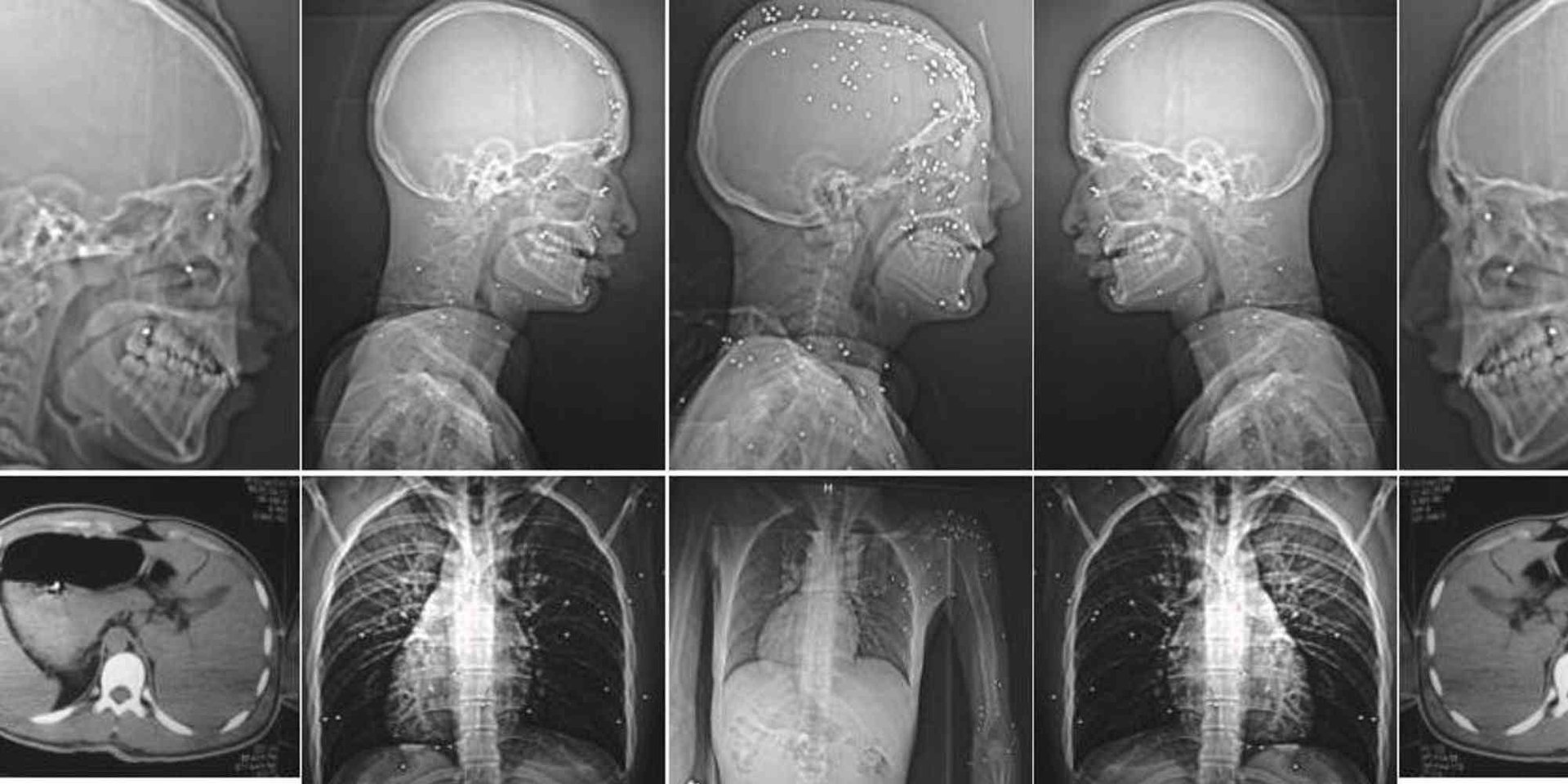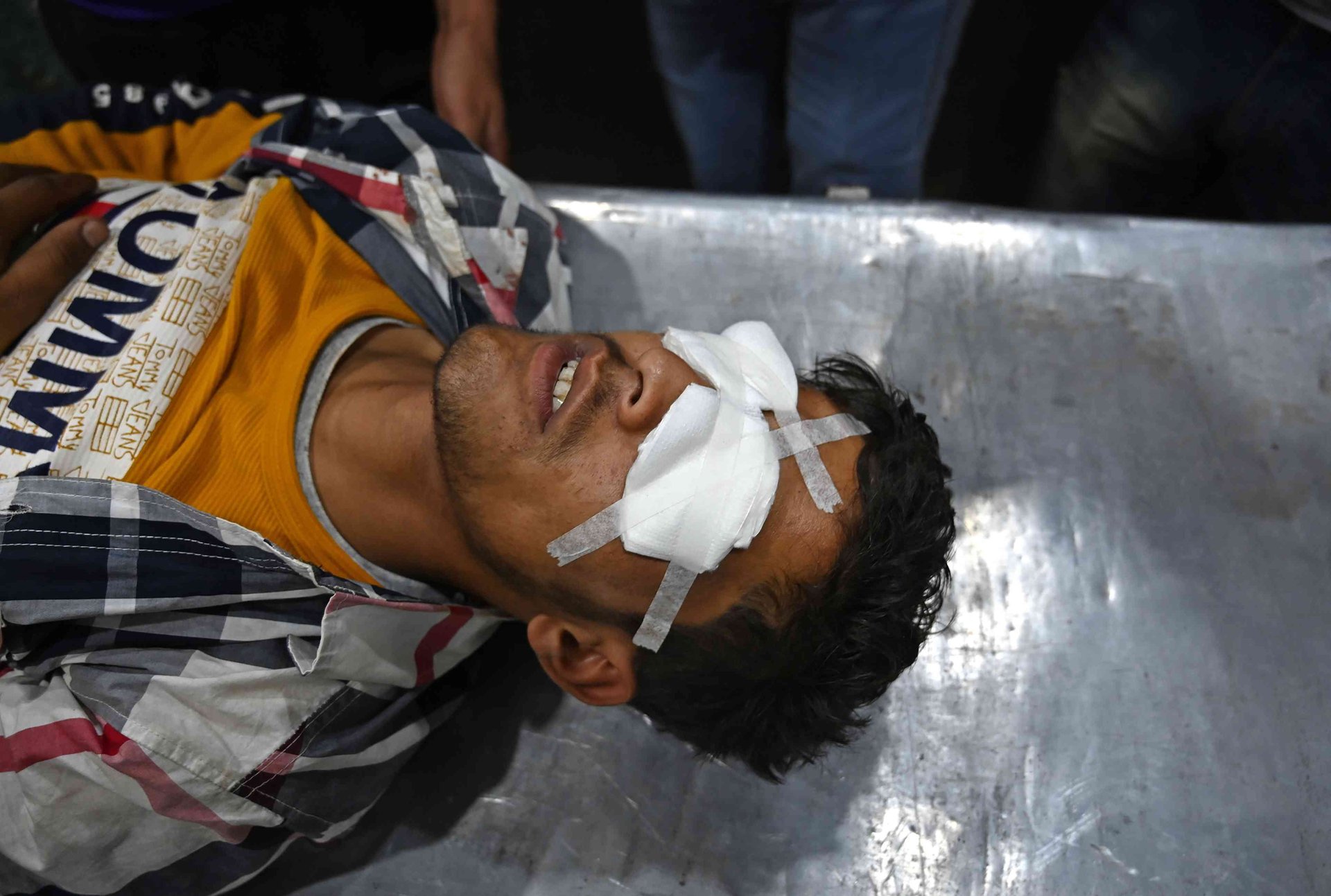Cut off from hospitals, Kashmiri protesters are treated by amateurs with cycle spokes
Ahmad, who lives in Srinagar’s Anchar locality, talks about pellet injuries with the air of an experienced surgeon.


Ahmad, who lives in Srinagar’s Anchar locality, talks about pellet injuries with the air of an experienced surgeon.
“When pellets enter your body, you feel like everything inside you is burning,” said the 23-year-old, who did not want to reveal his full name. “The pellets are very hot when they are fired. They are very dangerous if they hit a person in the eyes or if they hit your body from a short distance. But if they hit your back or legs from a long distance, you can manage with basic first aid.”
Ahmad is not a doctor, not even a medical student. He studies commerce. But over the past few weeks, he has emerged as one of the many pellet experts in Anchar. Metal pellets, fired from shotguns, are commonly used by security forces to quell civilian protests in Kashmir.
Anchar, part of the larger Soura area in Srinagar, has been a hub of protest since Aug. 5. That was when the centre scrapped special status for Jammu & Kashmir under Article 370, split the state into two union territories, and removed Article 35A, which empowered the state government to define “state subjects” and grant them specific rights.
Earlier this month, Asrar Ahmed Khan, a class 11 student from Buchpora, an area bordering Soura, died of pellet injuries—although the local police insist he was hit by a stone. There have been several more injuries, which went unreported or unrecorded. In many cases, injured youth stayed away from hospitals for fear of arrest. According to local wisdom, police officers dressed as civilians have been deployed at hospitals to identify and arrest boys who took part in protests.
Cut off from hospitals, localities in Srinagar have devised their own ways of treating injuries.
‘War had broken out’
Anchar has seen protests after congregational prayers every Friday since the special status was scrapped. The first of these Friday protests took place on Aug. 9, when a procession emerging from Anchar made its way towards Srinagar’s downtown area. They were stopped midway, in Zoonimar, a locality on the outskirts of downtown.
“On Aug. 9, at least 18 people were injured when forces shelled our procession near Zoonimar,” said another homegrown pellet remover, who did not want to be named. “They were immediately rushed to SKIMS. However, we got all of them home the same evening because we were sure that the police will come looking for them.”
SKIMS, or the Sheri-Kashmir Institute of Medical Sciences, is one of the top hospitals in the Kashmir Valley. It is also in Soura, just half a kilometre away from Anchar.
The bigger emergency would come two weeks later. After Aug. 9, residents of Anchar had dug up roads and barricaded their locality to prevent security forces from entering. For days, they had been kept at bay, prevented from carrying out night raids and arrests.
But on Aug. 23, it seemed they would finally enter Anchar. Jammu and Kashmir Police forces and men from the Central Reserve Police Force (CRPF) had been deployed at the five barricaded entry points, residents recalled.
“It looked like a war had broken out that day,” said Ahmad. “After prayers, clashes broke out across Anchar and boys tossed stones at the police and CRPF over the barricades. More than 200 were injured, including women, children and elderly people. A few boys took pellets in their eyes.”
The injured were gathered in a large hall in the local Jenaab Sahib shrine and treated there, Ahmad said. “The situation was worrying and some local boys managed to get a team of doctors to help us,” he said. “They were from the health department. While they treated some serious cases, local boys like us managed less severe injuries. Except for a few boys who were injured in the eyes, nobody went to the hospital.”
A photojournalist who had taken videos of the hall on Aug. 23 said he saw people lying in rows, small groups attending to each patient.

‘Blades and Dettol’
The pellet removers of Anchar have developed their own techniques to treat patients. Their surgical tools are rudimentary—blades and Dettol-soaked cotton.
“There are two ways to squeeze out a pellet from a human body,” said the pellet remover who did not want to be named. “If it’s closer to the upper layer of skin, one can just squeeze it out by pressing down on the skin at two ends of the wound. If a pellet has penetrated deep into the skin, we first use our fingertips to locate it. Then, we use a blade to cut open the skin near that spot and pull it out. After that, we wash the wound with Dettol-soaked cotton and that’s it. Remember, all of this happens without any local anaesthesia. And it takes a lot of time.”
Since Aug. 5, local residents say, more than 300 injured people have been treated this way. The pellet removers have had some practice in earlier seasons of protest. In 2016, for instance, hundreds were injured by pellets after the killing of Hizbul Mujahideen commander Burhan Wani triggered mass protests. “During the 2016 Burhan Wani uprising I treated 15 to 16 boys on my own,” said Ahmad. Some of his friends also became skilled pellet removers that year, he said.
With the fear of arrest keeping people away from hospitals, residents of Anchar have come to depend on homegrown remedies for common ailments as well.
“From typhoid to cough, we treat everyone on our own,” said one elderly resident of Anchar. “The maximum healthcare we are able to get inside Anchar are from local compounders and pharmacists. Nobody dares to leave Anchar.”
Residents allege the local police make no difference between protestors and civilians going about their daily lives. On Sept. 14, women from Anchar held a demonstration outside the Soura police station. They were protesting against the alleged detention of a young woman. According to local residents, she had gone to buy medicines from Soura’s main market when she was arrested.
A police official at the Soura police station said the woman had been asking fruit vendors in Soura main market to shut shop but denied that she had been arrested. Calls for a civil shutdown to protest against the Aug. 05 decisions have spread across the Valley. In some cases, gunmen have attacked traders who did not follow the shutdown.
Cycle spokes for needles
In the Shia-dominated Zadibal area of downtown Srinagar, the Hussaini Relief Committee, a volunteer organisation, has been hard at work for the last few weeks. Founded in 1972, the committee usually holds medical camps before religious festivals and occasions. Traditionally, they are busiest on Ashura, the 10th day of Muharram, the month of mourning for Shia Muslims. The day is usually marked by self-flagellation rituals.
This year, Ashura was observed on Sept. 10. Like every year, the committee had arranged a medical and blood donation camp that day. “The medical camp is presided over by volunteer doctors and people from other walks of life,” said a volunteer who did not want to be identified. “From immediate medical care to mourners to ensuring water for those taking part in processions, our team of 300 volunteers tries to help everyone.”
This year, volunteers at the camp had to deal with a different sort of injury. On Sept.7, Jammu & Kashmir government had banned all Muharram processions, even minor ones. According to residents of Zadibal, when mourners tried to defy the restrictions, they were showered with pellets.
“Muharram processions in Kashmir have been banned for decades,” said the volunteer. “But this year, the government didn’t even allow small processions within the interiors of our locality. Instead, they fired pellets on a peaceful procession.”

According to volunteers at the Hussaini Relief Committee, more than 100 patients with pellet injuries turned up at the Zadibal camp on Sept. 10. This included women and aged people, they said. “This never happened even at the height of the militancy in the 1990s,” said the volunteer.
With resources stretched at the Zadibal camp this year, even volunteers with no medical training had to pitch in. “When there was a huge rush of injured, we panicked,” said one volunteer. “Our volunteer doctors were doing their best to give medical attention to the injured but we were totally outnumbered. It was then that I brought the steel spoke of a cycle wheel and beat one side into a point. After that, I heated up the pointed end with a cigarette lighter to sterilise it. I used it to take out pellets from more than a dozen injured.”
According to him, the injured were were scared to go to hospitals because all exits from Zadibal were sealed by the police and CRPF. “If they got hold of an injured person, the police and CRPF personnel would have beaten them up,” he claimed.
A medical warning
While many see no option but to get their wounds treated by amateur pellet removers, doctors in Kashmir warn of the dangers of such treatments—from skin damage to infections to the damage of vital organs.
“Usually, we don’t take out pellets from a patient’s body if he has been hit in the back and legs,” said a senior surgeon at the Shri Maharaja Hari Singh Hospital in Srinagar. “Because that means we have to make as many incisions as there are pellets in the patient’s body. Our priority is to monitor the patient if he’s been hit by pellets around vital organs like the kidneys, intestines or liver. If the pellets have perforated deep into the skin, we monitor the patient to check that they are not affecting the functioning of these vital organs.”
The initial treatment must be followed by a course of antibiotics, he continued. “Since pellets are foreign objects, antibiotics become essential,” the surgeon said. “Normally, we avoid taking out every pellet from the body because the presence of these iron particles inside the skin is not dangerous.”
Human rights activists in Kashmir point out that cutting off the injured from proper medical aid amounts to a violation of international humanitarian laws outlined in the Geneva Conventions.
Every injured person, even if he is a member of an armed group, has the right to medical aid “without any adverse distinction founded on sex, race, nationality, religion, political opinions, or any other similar criteria,” says Article 12 of the 1949 Geneva Conventions. India was among the countries that ratified the conventions.
This piece was first published on Scroll.in. We welcome your comments at [email protected].